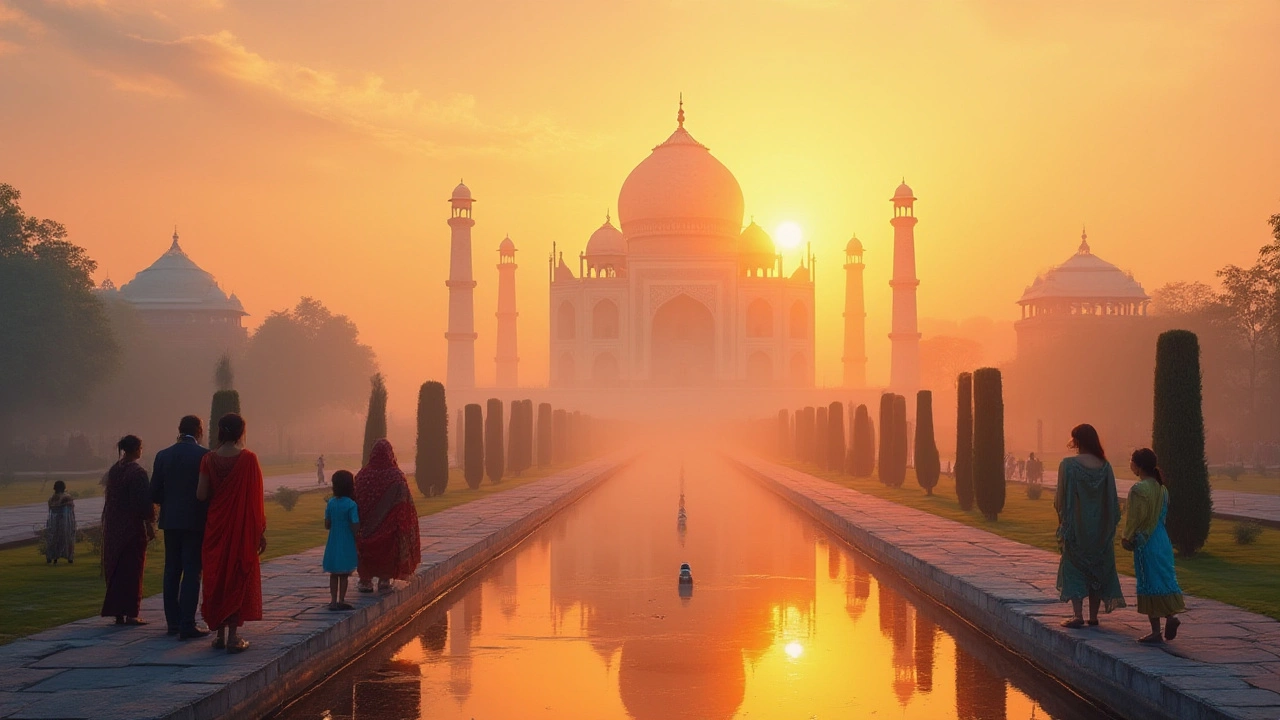
Get the ultimate guide to the best month for visiting the Taj Mahal. Learn about Agra's weather, crowd levels, photography tips, and how to enjoy India’s most iconic landmark.
When planning a trip, knowing the Best time to visit Taj Mahal, the period when weather, crowds and cultural events align for a memorable experience. Also called optimal visit period for the Taj Mahal, this window matters because the monument’s white marble shines differently under each season’s light. The Taj Mahal, the iconic white‑marble mausoleum in Agra, India is a UNESCO World Heritage site, and its beauty can be dulled by extreme heat or monsoon mist. Understanding Agra climate, the local weather patterns ranging from hot summer to cool winter helps you pick dates that avoid the sweltering highs and the soggy lows.
Three key factors shape the perfect travel window: temperature, humidity, and crowd density. In October through March, temperatures stay between 10‑25 °C (50‑77 °F) and the air is crisp, so the marble stays cool and the sunrise view is crystal clear. This period also coincides with major Indian festivals like Diwali (late October/early November) and Holi (March), which draw extra tourists but also add a vibrant cultural layer. While festivals boost the experience, they also push crowd numbers up, meaning you might need to book tickets early. The monsoon season (July‑September) brings heavy rains and high humidity; the Taj’s reflecting pool often looks dull, and bathroom facilities can be less reliable. Summer (April‑June) pushes temperatures above 40 °C (104 °F), making long outdoor waits uncomfortable, though the site is less crowded.
Another subtle element is air quality. Post‑monsoon months usually have clearer skies, letting the sunrise cast a golden hue on the marble dome—a photographer’s dream. Conversely, winter fog can mask details, so checking a short‑term forecast before you book is wise. Seasonal pricing also shifts; hotels and flights tend to be cheapest in the shoulder months of late September and early April, offering a cost‑effective alternative to peak winter rates.
Travel logistics tie into these factors. If you aim for the cool, clear months, book accommodation near the Taj well in advance, especially around festival dates. For budget‑conscious travelers, consider the early spring window (late February to early March) when crowds thin out but the weather remains pleasant. Train connections from Delhi to Agra run frequently, but tickets fill up fast during holiday weeks, so secure them early. Lastly, remember to dress modestly and carry a light sweater for evenings, as temperatures can dip below 5 °C (41 °F) in January.
Below you’ll find a curated list of articles that dive deeper into each of these angles—weather breakdowns, festival calendars, budget tips, and step‑by‑step planning guides. Whether you’re chasing the perfect sunrise shot, looking to avoid crowds, or just want to know how to pack for an Agra adventure, the posts below give you practical insights to turn your visit into a smooth, unforgettable experience.

Get the ultimate guide to the best month for visiting the Taj Mahal. Learn about Agra's weather, crowd levels, photography tips, and how to enjoy India’s most iconic landmark.